Performance of Sprayed PVDF-Al2O3 Composite Coating for Industrial and Civil Applications
Abstract
:1. Introduction
2. Experimental Procedure
2.1. Starting Materials
2.2. Samples Preparation
2.3. Characterization Techniques
3. Results and Discussion
3.1. Wettability Analysis
3.2. Corrosion Analysis
3.3. Adhesion Analysis
3.4. Surface Morphology Analysis
3.5. Nanohardness Analysis
4. Conclusions
Author Contributions
Funding
Institutional Review Board Statement
Informed Consent Statement
Data Availability Statement
Conflicts of Interest
References
- Mohamed, A.; Jafari, R.; Farzaneh, M. An Optimization of Superhydrophobic Polyvinylidene Fluoride/Zinc Oxide Materials Using Taguchi Method. Appl. Surf. Sci. 2014, 288, 229–237. [Google Scholar] [CrossRef]
- Radwan, A.B.; Mohamed, A.M.A.; Abdullah, A.M.; Al-Maadeed, M.A. Corrosion Protection of Electrospun PVDF-ZnO Superhydrophobic Coating. Surf. Coat. Technol. 2016, 289, 136–143. [Google Scholar]
- Qian, B.; Shen, Z. Fabrication of Superhydrophobic Surfaces by Dislocation-Selective Chemical Etching on Aluminum, Copper, and Zinc Substrates. Langmuir 2005, 21, 9007–9009. [Google Scholar] [CrossRef]
- Burkarter, E.; Saul, C.K.; Thomazi, F.; Cruz, N.C.; Zanata, S.M.; Roman, L.S.; Schreiner, W.H. Electrosprayed Superhydrophobic PTFE: A Non-Contaminating Surface. J. Phys. D Appl. Phys. 2007, 40, 7778–7781. [Google Scholar] [CrossRef]
- Meng, L.-Y.; Park, S.-J. Effect of Fluorination of Carbon Nanotubes on Superhydrophobic Properties of Fluoro-Based Films. J. Colloid Interface Sci. 2010, 342, 559–563. [Google Scholar] [CrossRef] [PubMed]
- Gan, W.Y.; Lam, S.W.; Chiang, K.; Amal, R.; Zhao, H.; Brungs, M.P. Novel TiO2 Thin Film with Non-UV Activated Superwetting and Antifogging Behaviours. J. Mater. Chem. 2007, 17, 952–954. [Google Scholar] [CrossRef]
- Nicolas, M.; Guittard, A.F.; Géribaldi, S. Stable Superhydrophobic and Lipophobic Conjugated Polymers Films. Langmuir 2006, 22, 3081–3088. [Google Scholar] [CrossRef] [PubMed]
- Taurino, R.; Fabbri, E.; Messori, M.; Pilati, F.; Pospiech, D.; Synytska, A. Facile Preparation of Superhydrophobic Coatings by Sol–Gel Processes. J. Colloid Interface Sci. 2008, 325, 149–156. [Google Scholar] [CrossRef]
- Amigoni, S.; de Givenchy, E.T.; Dufay, M.; Guittard, F. Covalent Layer-by-Layer Assembled Superhydrophobic Organic−Inorganic Hybrid Films. Langmuir 2009, 25, 11073–11077. [Google Scholar] [CrossRef] [PubMed]
- Chen, W.; Fadeev, A.Y.; Hsieh, M.C.; Öner, D.; Youngblood, J.; McCarthy, T.J. Ultrahydrophobic and Ultralyophobic Surfaces: Some Comments and Examples. Langmuir 1999, 15, 3395–3399. [Google Scholar] [CrossRef]
- Huang, L.; Lau, S.P.; Yang, H.Y.; Leong, E.S.P.; Yu, S.F.; Prawer, S. Stable Superhydrophobic Surface via Carbon Nanotubes Coated with a ZnO Thin Film. J. Phys. Chem. B 2005, 109, 7746–7748. [Google Scholar] [CrossRef] [PubMed]
- Liu, Z.; Zhang, C.; Zhang, X.; Wang, C.; Liu, F.; Yuan, R.; Wang, H. Durable Superhydrophobic PVDF/FEVE/GO@TiO2 Composite Coating with Excellent Anti-Scaling and UV Resistance Properties. Chem. Eng. J. 2021, 411, 128632–128642. [Google Scholar] [CrossRef]
- Roach, P.; Shirtcliffe, N.J.; Newton, M.I. Progess in Superhydrophobic Surface Development. Soft Matter 2008, 4, 224–240. [Google Scholar] [CrossRef] [PubMed]
- Song, X.; Zhai, J.; Wang, A.Y.; Jiang, L. Fabrication of Superhydrophobic Surfaces by Self-Assembly and Their Water-Adhesion Properties. J. Phys. Chem. B 2005, 109, 4048–4052. [Google Scholar] [CrossRef]
- Xue, C.-H.; Jia, S.-T.; Zhang, J.; Ma, J.-Z. Large-Area Fabrication of Superhydrophobic Surfaces for Practical Applications: An Overview. Sci. Technol. Adv. Mater. 2010, 11, 033002. [Google Scholar] [CrossRef] [PubMed]
- Yang, J.; Zhang, Z.; Men, X.; Xu, X.; Zhu, X. A Simple Approach to Fabricate Regenerable Superhydrophobic Coatings. Colloids Surf. A Physicochem. Eng. Asp. 2010, 367, 60–64. [Google Scholar] [CrossRef]
- Zhang, W.; Shi, Z.; Zhang, F.; Liu, X.; Jin, J.; Jiang, L. Superhydrophobic and Superoleophilic PVDF Membranes for Effective Separation of Water-in-Oil Emulsions with High Flux. Adv. Mater. 2013, 25, 2071–2076. [Google Scholar] [CrossRef]
- Peng, C.; Xing, S.; Yuan, Z.; Xiao, J.; Wang, C.; Zeng, J. Preparation and Anti-Icing of Superhydrophobic PVDF Coating on a Wind Turbine Blade. Appl. Surf. Sci. 2012, 259, 764–768. [Google Scholar] [CrossRef]
- Wang, H.; Liu, Z.; Wang, E.; Yuan, R.; Gao, D.; Zhang, X.; Zhu, Y. A Robust Superhydrophobic PVDF Composite Coating with Wear/Corrosion-Resistance Properties. Appl. Surf. Sci. 2015, 332, 518–524. [Google Scholar] [CrossRef]
- Zhang, H.; Guo, Y.; Zhang, X.; Hu, X.; Wang, C.; Yang, Y. Preparation and Characterization of PSF-TIO2 HYBrid Hollow Fiber UF Membrane by Sol–Gel Method. J. Polym. Res. 2020, 27, 12. [Google Scholar]
- Shang, H.M.; Wang, Y.; Takahashi, K.; Cao, G.Z.; Li, D.; Xia, Y.N. Nanostructured Superhydrophobic Surfaces. J. Mater. Sci. 2005, 40, 3587–3591. [Google Scholar] [CrossRef]
- Boccaccio, T.; Bottino, A.; Capannelli, G.; Piaggio, P. Characterization of PVDF Membranes by Vibrational Spectroscopy. J. Membr. Sci. 2002, 210, 315–329. [Google Scholar] [CrossRef]
- Liu, Z.; Wang, H.; Zhang, X.; Lv, C.; Zhao, Z.; Wang, C. Durable and Self-Healing Superhydrophobic Polyvinylidene Fluoride (PVDF) Composite Coating with In-Situ Gas Compensation Function. Surf. Coat. Technol. 2017, 327, 18–24. [Google Scholar] [CrossRef]
- Qing, Y.; Yang, C.; Yu, N.; Shang, Y.; Sun, Y.; Wang, L.; Liu, C. Superhydrophobic TiO2/Polyvinylidene Fluoride Composite Surface with Reversible Wettability Switching and Corrosion Resistance. Chem. Eng. J. 2016, 290, 37–44. [Google Scholar] [CrossRef]
- Ghazali, N.; Basirun, W.J.; Nor, A.M.; Johan, M.R. Super-Amphiphobic Coating System Incorporating Functionalized Nano-Al2O3 in Polyvinylidene Fluoride (PVDF) with Enhanced Corrosion Resistance. Coatings 2020, 10, 387. [Google Scholar] [CrossRef] [Green Version]
- Liu, Z.; Wang, H.; Wang, E.; Zhang, X.; Yuan, R.; Zhu, Y. Superhydrophobic poly(vinylidene fluoride) membranes with controllable structure and tunable wettability prepared by one-step electrospinning. Polymer 2016, 82, 105–113. [Google Scholar] [CrossRef]
- Hong, J.; He, Y. Effects of Nano Sized Zinc Oxide on the Performance of PVDF Microfiltration Membranes. Desalination 2012, 302, 71–79. [Google Scholar] [CrossRef]
- Wei, X.-L.; Li, N.; Yi, W.J.; Li, L.-J.; Chao, Z.-S. High Performance Super-Hydrophobic ZrO 2 -SiO 2 Porous Ceramics Coating with Flower-Like CeO 2 Micro/Nano-Structure. Surf. Coatings Technol. 2017, 325, 565–571. [Google Scholar] [CrossRef]
- Duan, Z.; Luo, D.; Liu, Z.; Zhao, Z.; Zhao, M.; Zhang, J.; Zhao, G. Patterning ZrO2 Films Surface: Superhydrophilic and Superhydrophobic Properties. Ceram. Int. 2017, 43, 5089–5094. [Google Scholar] [CrossRef]
- Latthe, S.S.; Gurav, A.B.; Maruti, C.S.; Vhatkar, R.S. Recent Progress in Preparation of Superhydrophobic Surfaces: A Review. J. Surf. Eng. Mater. Adv. Technol. 2012, 02, 76–94. [Google Scholar] [CrossRef]
- Lakshmi, R.; Bharathidasan, T.; Bera, P.; Basu, B.J. Fabrication of Superhydrophobic and Oleophobic Sol–Gel Nanocomposite Coating. Surf. Coatings Technol. 2012, 206, 3888–3894. [Google Scholar] [CrossRef]
- Xiong, D.; Liu, G.; Duncan, E.S. Robust Amphiphobic Coatings from Bi-Functional Silica Particles on Flat Substrates. Polymer 2013, 54, 3008–3016. [Google Scholar] [CrossRef]
- Hsieh, C.-T.; Wu, F.-L.; Chen, W.-Y. Superhydrophobicity and Superoleophobicity from Hierarchical Silica Sphere Stacking Layers. Mater. Chem. Phys. 2010, 121, 14–21. [Google Scholar] [CrossRef]
- Basu, B.J.; Kumar, V.D.; Anandan, C. Surface Studies on Superhydrophobic and Oleophobic Polydimethylsiloxane–Silica Nanocomposite Coating System. Appl. Surf. Sci. 2012, 261, 807–814. [Google Scholar] [CrossRef]
- Dhoke, S.K.; Khanna, A. Electrochemical Impedance Spectroscopy (EIS) Study of Nano-Alumina Modified Alkyd Based Waterborne Coatings. Prog. Org. Coat. 2012, 74, 92–99. [Google Scholar] [CrossRef]
- Sutha, S.; Suresh, S.; Raj, B.; Ravi, K. Transparent Alumina Based Superhydrophobic Self–Cleaning Coatings for Solar cell Cover Glass Applications. Sol. Energy Mater. Sol. Cells 2017, 165, 128–137. [Google Scholar] [CrossRef]
- Richard, E.; Aruna, S.; Basu, B.J. Superhydrophobic Surfaces Fabricated by surface Modification of Alumina Particles. Appl. Surf. Sci. 2012, 258, 10199–10204. [Google Scholar] [CrossRef]
- Na, M.-J.; Yang, H.; Jung, H.-J.; Park, S.-D. Robust Hydrophobic Surface Driven by Al2O3/Glass Composite Coatings. Surf. Coat. Technol. 2019, 372, 134–139. [Google Scholar] [CrossRef]
- Kang, M.; Jung, R.; Kim, H.-S.; Jin, H.-J. Preparation of Superhydrophobic Polystyrene Membranes by Electrospinning. Colloids Surf. A Physicochem. Eng. Asp. 2008, 313-314, 411–414. [Google Scholar] [CrossRef]
- Mohamed, A.M.A.; Abdullah, A.M.; Younan, N.A. Corrosion Behavior of Superhydrophobic Surfaces: A review. Arab. J. Chem. 2015, 8, 749–765. [Google Scholar] [CrossRef] [Green Version]
- Nakajima, A.; Hashimoto, K.; Watanabe, T. Invited Review Recent Studies on Super-Hydrophobic Films. Mol. Mater. Funct. Polym. 2001, 41, 31–41. [Google Scholar]
- El Haleem, S.A.; El Wanees, S.A.; Bahgat, A. Environmental Factors Affecting the Corrosion Behaviour of Reinforcing Steel. VI. Benzotriazole and its Derivatives as of steel. Corros. Sci. 2014, 87, 321–333. [Google Scholar] [CrossRef]
- Wang, N.; Xiong, D. Applied Surface Science Superhydrophobic membranes on metal substrate and their corrosion protection in different corrosive media. Appl. Surf. Sci. 2014, 305, 603–608. [Google Scholar] [CrossRef]
- Ji, J.; Liu, F.; Hashim, N.A.; Abed, M.M.; Li, K. Poly(vinylidene fluoride) (PVDF) Membranes for Fluid Separation. React. Funct. Polym. 2015, 86, 134–153. [Google Scholar] [CrossRef]
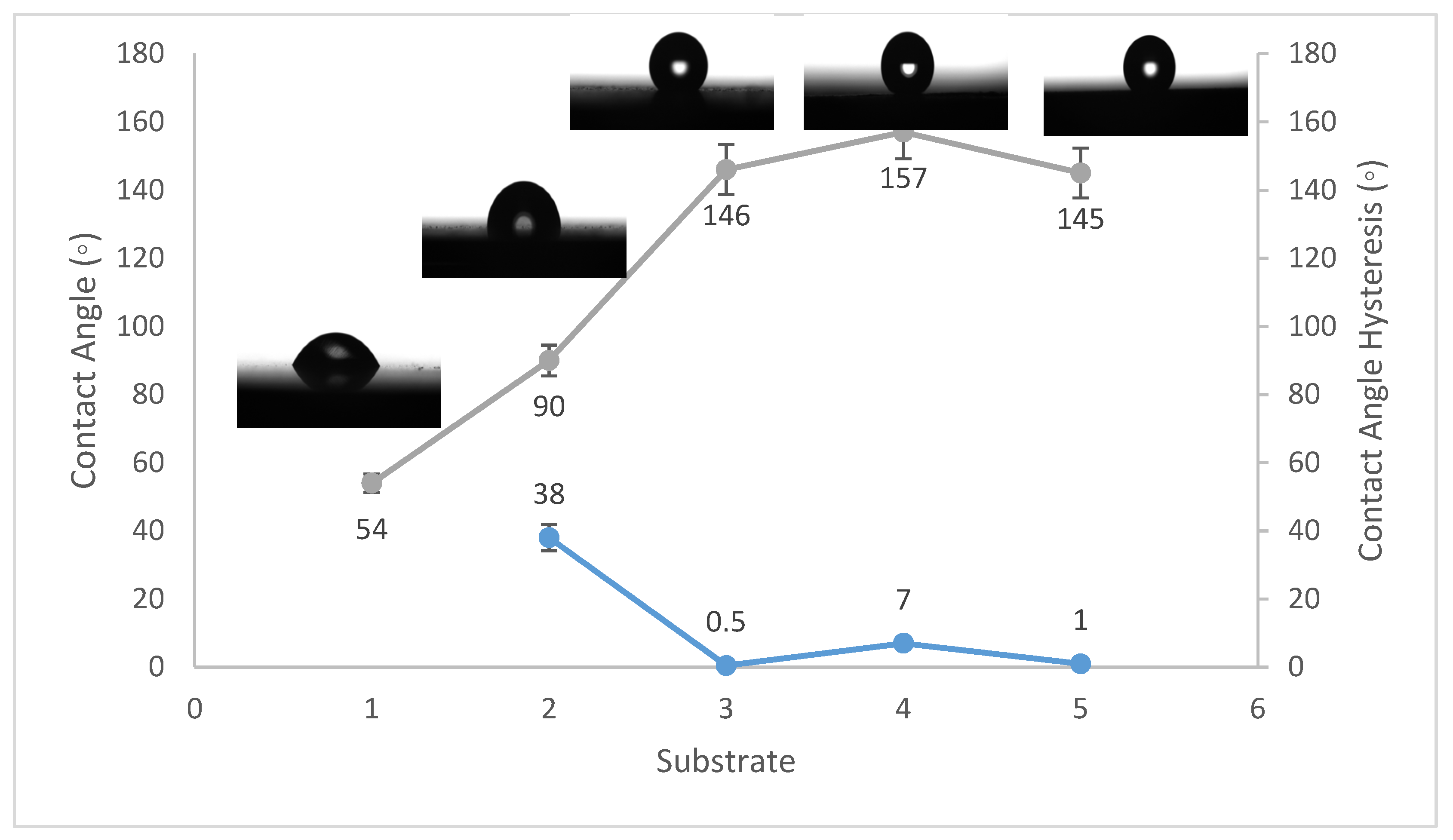
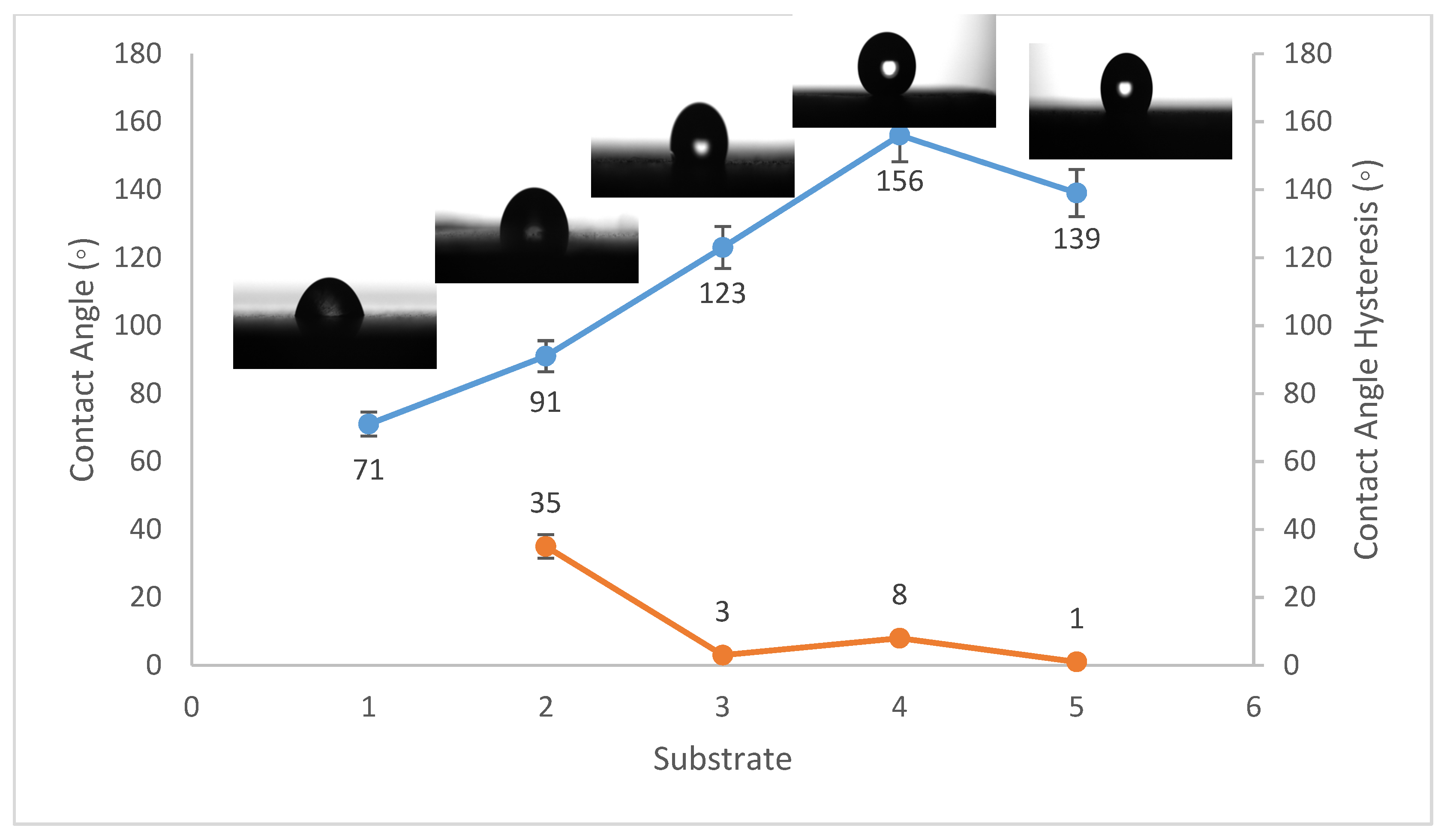
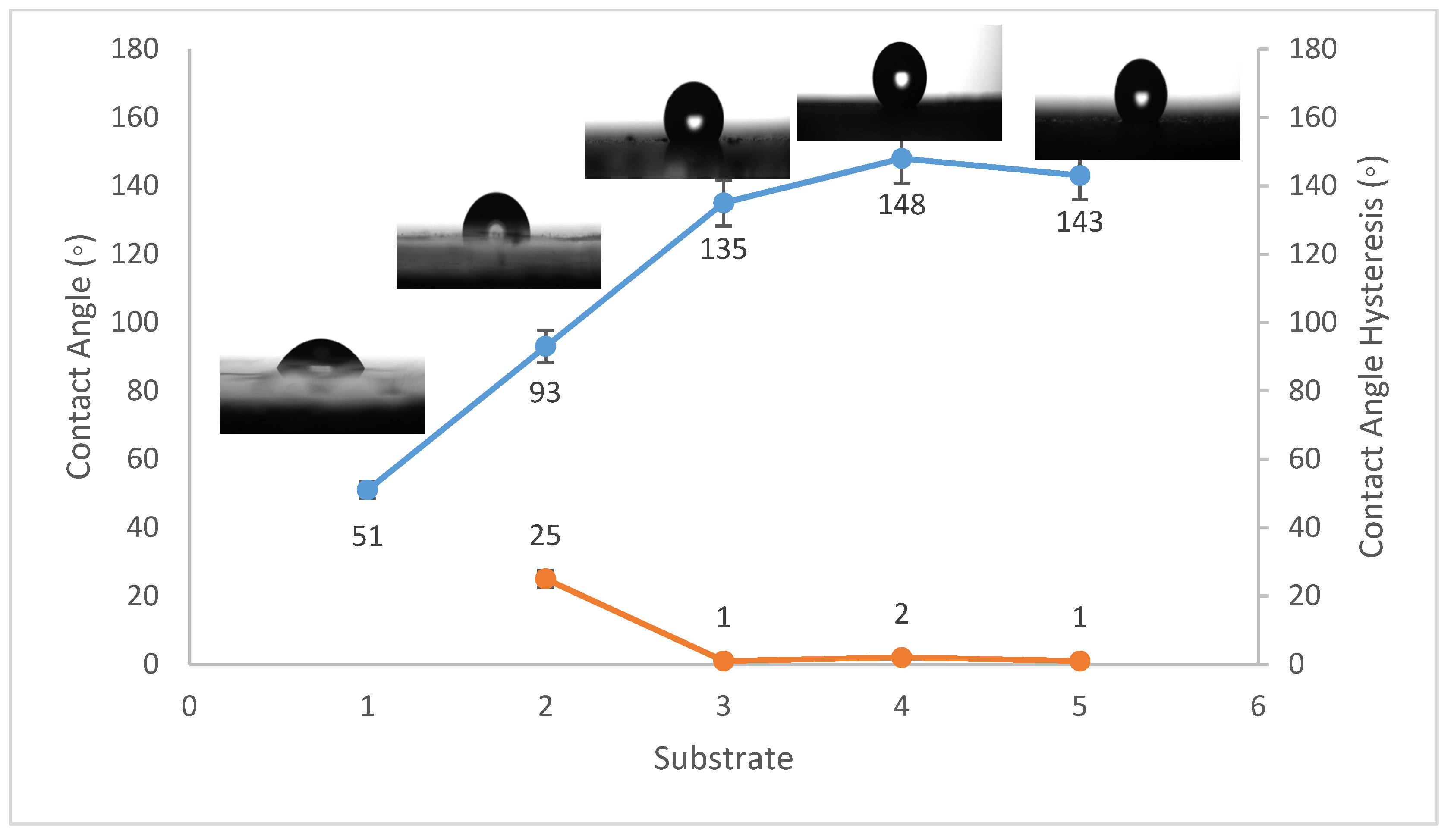
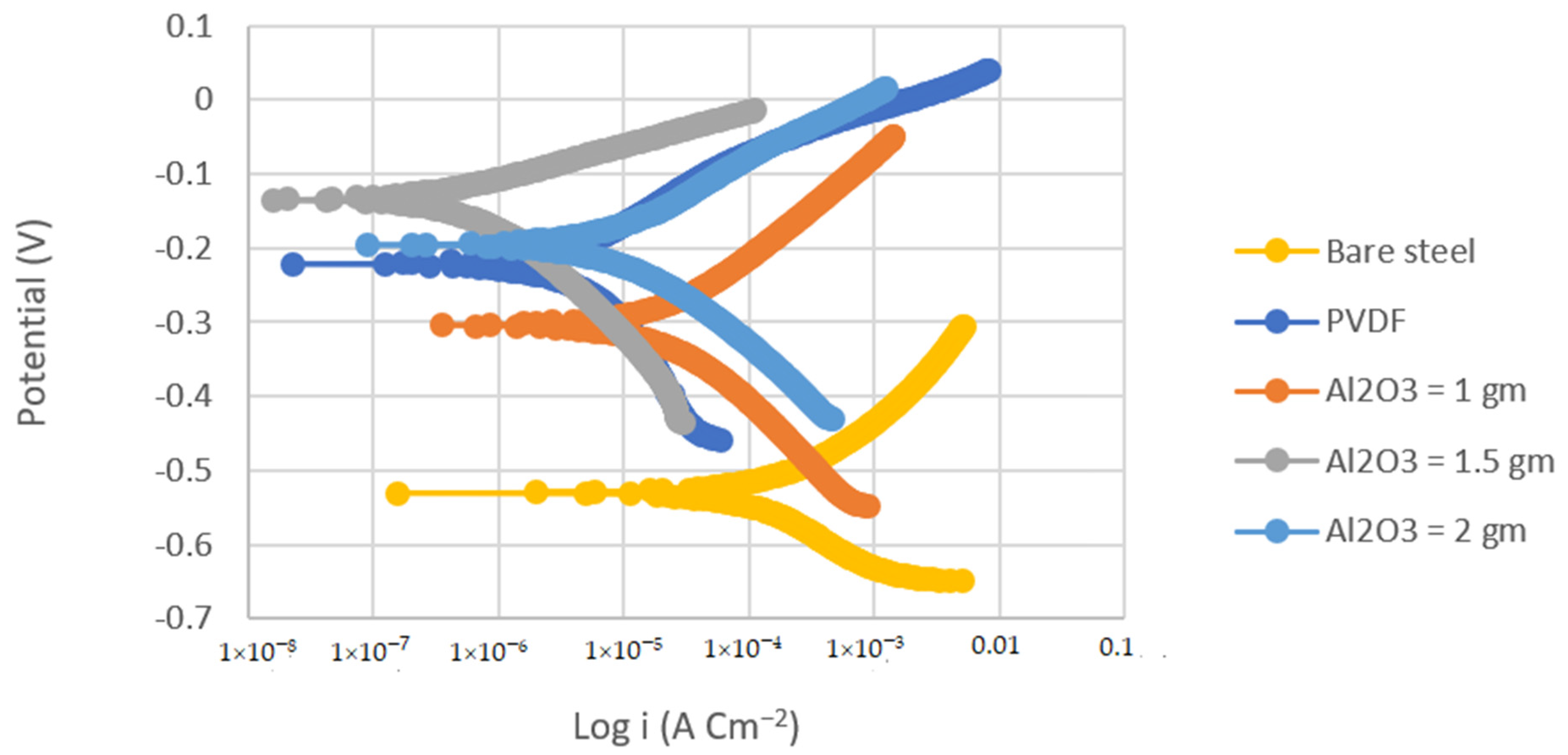

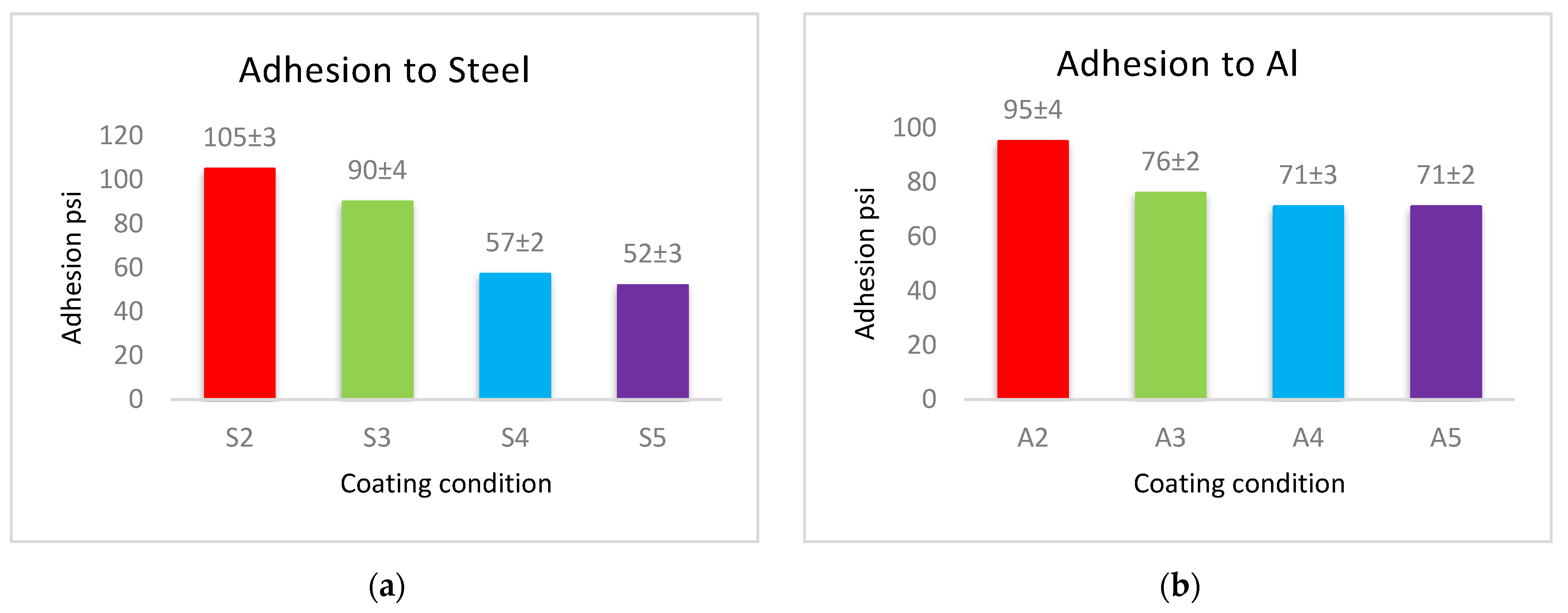
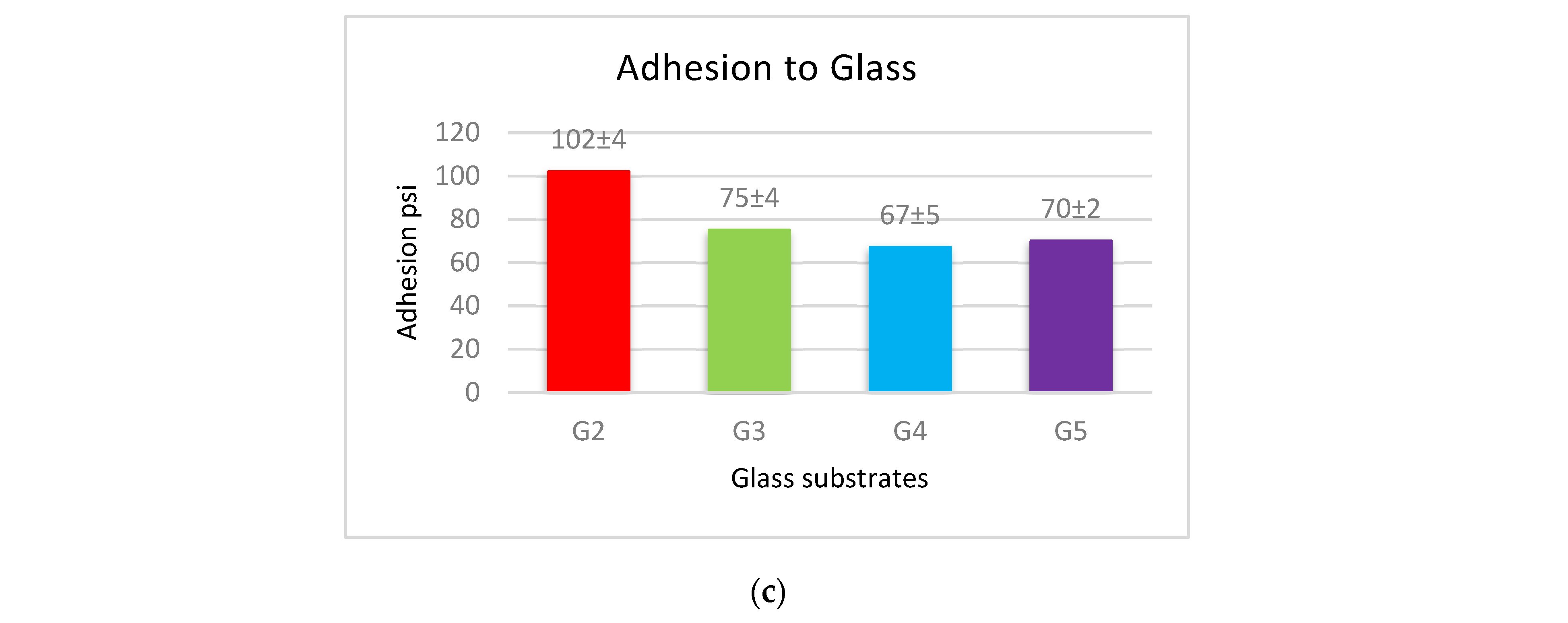
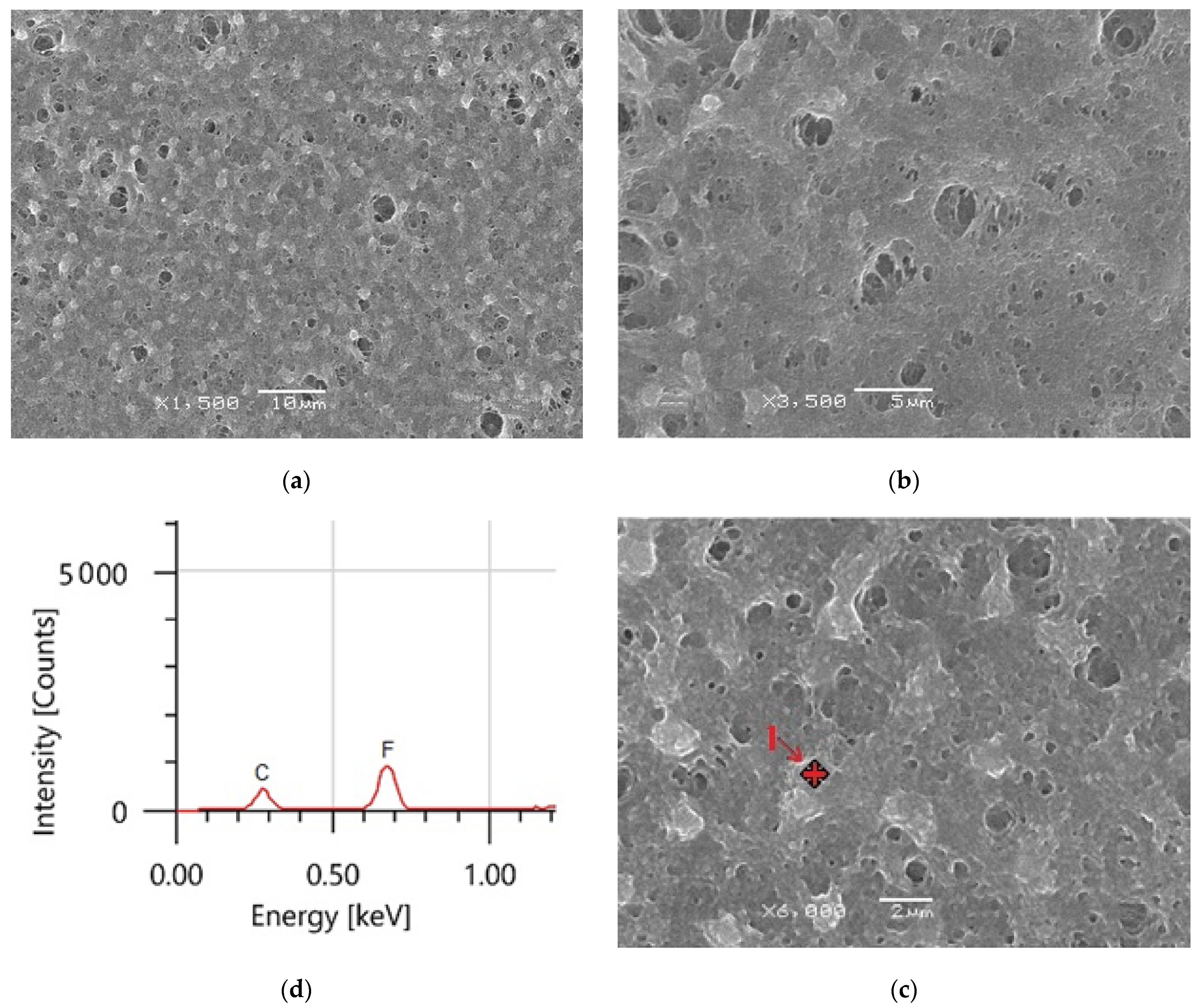

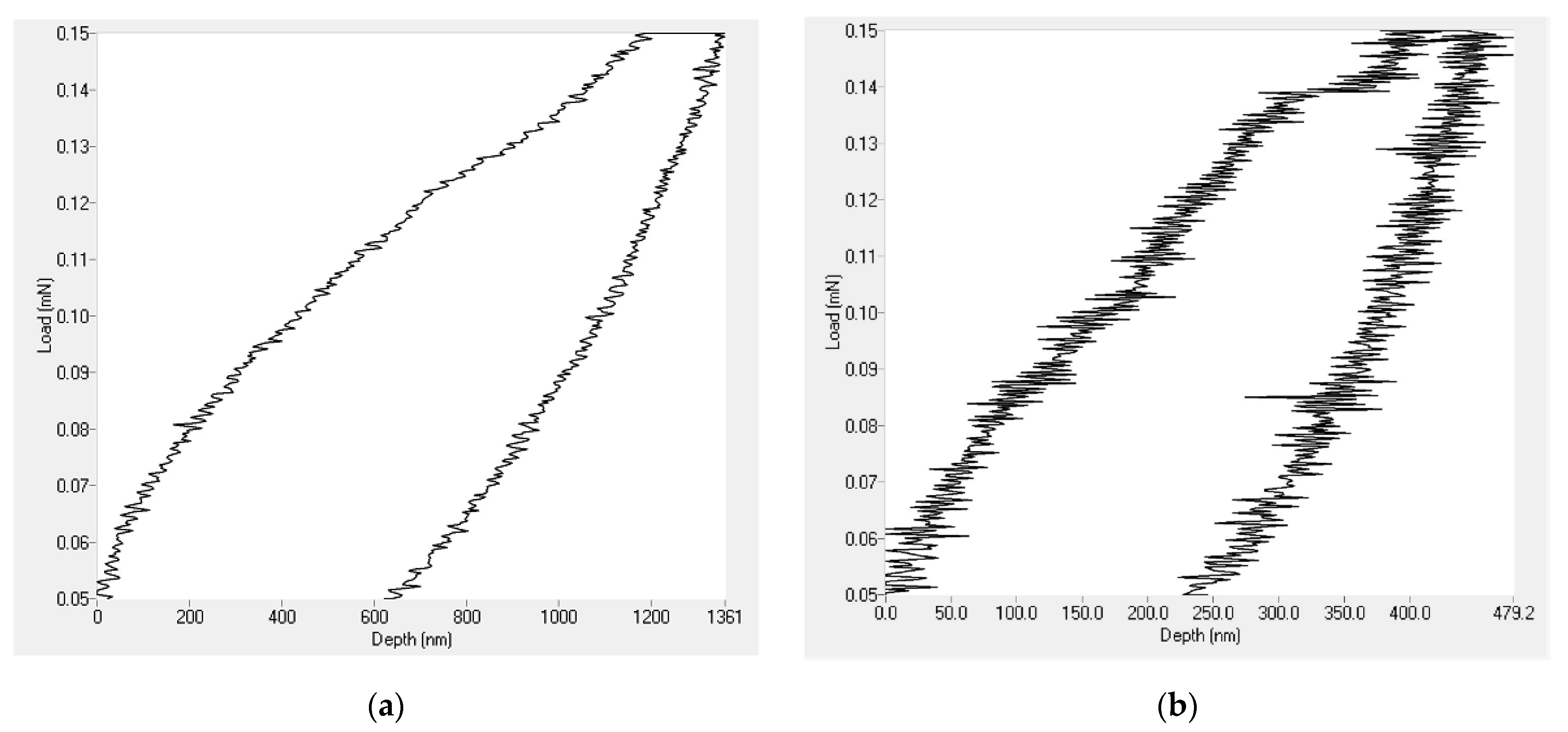
| Substrate | Condition | Amounts per 100 mL of Complex Solution | Substrate No. |
|---|---|---|---|
| Steel | Bare | - | S1 |
| PVDF | 5.0 g | S2 | |
| Al2O3 | 1.0 g | S3 | |
| 1.5 g | S4 | ||
| 2.0 g | S5 | ||
| Al | Bare | - | A1 |
| PVDF | 5.0 g | A2 | |
| Al2O3 | 1.0 g | A3 | |
| 1.5 g | A4 | ||
| 2.0 g | A5 | ||
| Glass | Bare | - | G1 |
| PVDF | 5.0 g | G2 | |
| Al2O3 | 1.0 g | G3 | |
| 1.5 g | G4 | ||
| 2.0 g | G5 |
| Steel Substrates | βa (mV) | βc (mV) | Rp (KΩ cm2) | CR Rate (mpy) | icorr (µA/cm2) | η (%) |
|---|---|---|---|---|---|---|
| Bare Steel | 117 | 139 | 0.7 | 17 | 37.75 | - |
| PVDF | 73 | 198 | 6.9 | 0.24 | 3.34 | 91 |
| PVDF + 1.5 g Al2O3 | 43 | 157 | 58.6 | 0.11 | 0.25 | 99 |
| Al Substrates | ||||||
| Bare Al | 54 | 122 | 1.9 | 3.54 | 8.26 | - |
| PVDF | 93 | 865 | 28 | 0.08 | 1.3 | 84 |
| PVDF + 1.5 g Al2O3 | 39 | 467 | 292.8 | 0.06 | 0.15 | 98 |
| Element | PVDF Alone | PVDF + 1.5 g Al2O3 | ||
|---|---|---|---|---|
| Mass % | Atom % | Mass % | Atom % | |
| C | 47.65 | 59.01 | 28.47 | 39.14 |
| F | 52.35 | 40.99 | 27.16 | 23.60 |
| O | 24.05 | 24.82 | ||
| Al | 20.32 | 12.44 | ||
| Total | 100.00 | 100.00 | 100.00 | 100.00 |
| Sample | PVDF Alone | PVDF + 1.5 g Al2O3 |
|---|---|---|
| Hardness (MPa) | 105 | 190 |
| Elastic Modulus (MPa) | 789 | 1073 |
| Maximum Depth (nm) | 1360 | 479 |
Publisher’s Note: MDPI stays neutral with regard to jurisdictional claims in published maps and institutional affiliations. |
© 2021 by the authors. Licensee MDPI, Basel, Switzerland. This article is an open access article distributed under the terms and conditions of the Creative Commons Attribution (CC BY) license (https://creativecommons.org/licenses/by/4.0/).
Share and Cite
Mohamed, A.M.A.; Hasan, H.; Seleman, M.M.E.-S.; Ahmed, E.; Saleh, S.M.; El-Maghraby, R.M. Performance of Sprayed PVDF-Al2O3 Composite Coating for Industrial and Civil Applications. Materials 2021, 14, 6358. https://doi.org/10.3390/ma14216358
Mohamed AMA, Hasan H, Seleman MME-S, Ahmed E, Saleh SM, El-Maghraby RM. Performance of Sprayed PVDF-Al2O3 Composite Coating for Industrial and Civil Applications. Materials. 2021; 14(21):6358. https://doi.org/10.3390/ma14216358
Chicago/Turabian StyleMohamed, Adel M. A., Hosam Hasan, Mohamed M. El-Sayed Seleman, Essam Ahmed, Sayed M. Saleh, and Rehab M. El-Maghraby. 2021. "Performance of Sprayed PVDF-Al2O3 Composite Coating for Industrial and Civil Applications" Materials 14, no. 21: 6358. https://doi.org/10.3390/ma14216358
APA StyleMohamed, A. M. A., Hasan, H., Seleman, M. M. E.-S., Ahmed, E., Saleh, S. M., & El-Maghraby, R. M. (2021). Performance of Sprayed PVDF-Al2O3 Composite Coating for Industrial and Civil Applications. Materials, 14(21), 6358. https://doi.org/10.3390/ma14216358








